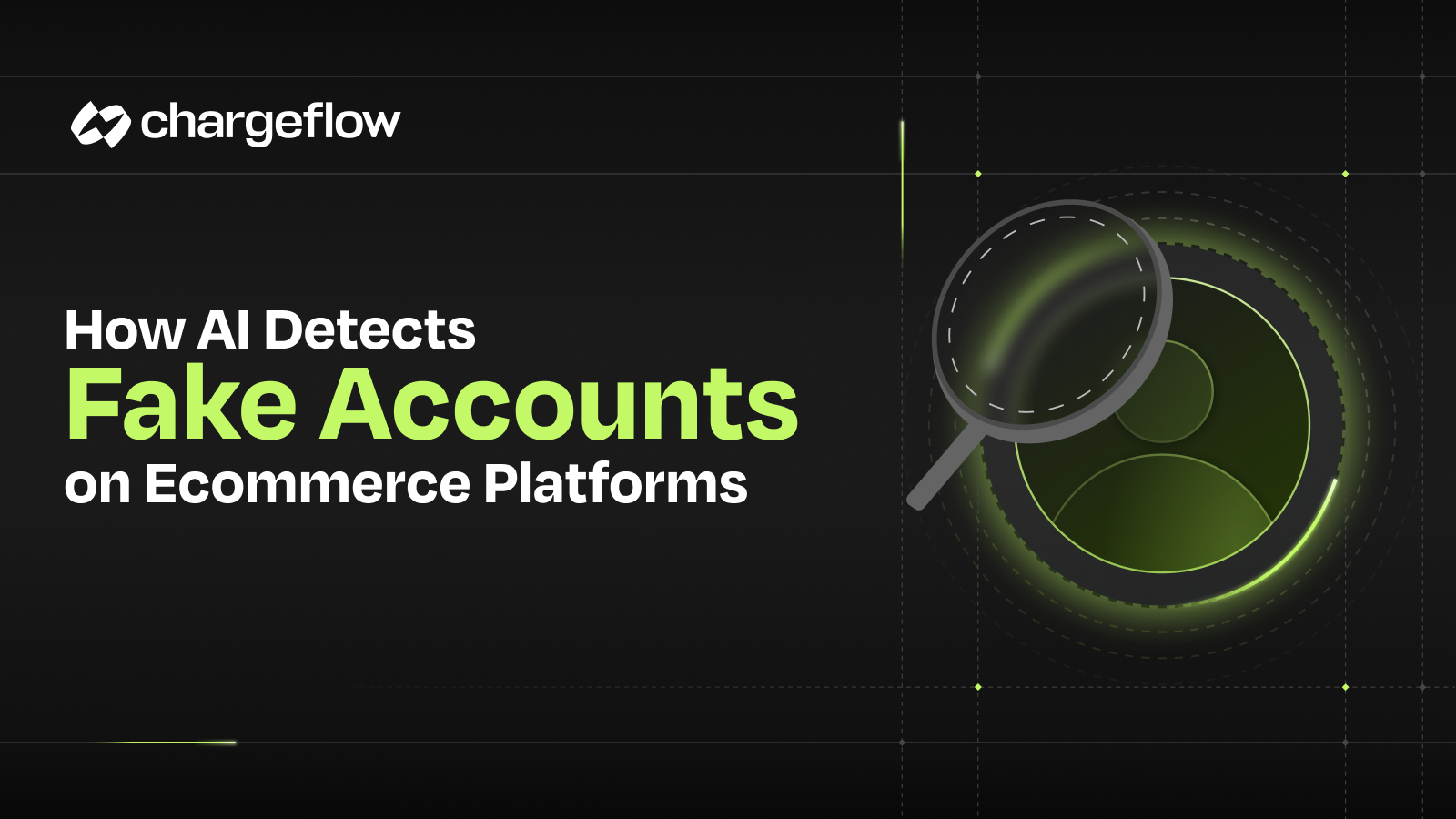Biometric Payments for Security and Convenience

Chargebacks?
No longer your problem.
Recover 4x more chargebacks and prevent up to 90% of incoming ones, powered by AI and a global network of 15,000 merchants.
Biometric payments not only enhance security and lower the risk of fraud while but also boost the user experience. Read this to learn more.
Customers want things to be easy. Ideally, they would prefer to explore an online store to find the perfect product(s) and zip through checkout without hassles. However forgotten passwords, complicated forms, and security concerns, among other issues, can complicate things.
This friction in the buying process doesn’t just frustrate them; it leads to abandoned carts and lost sales. But what if there was a way to make the buying experience a breeze while keeping it secure?
That’s where biometric payments come in, and more and more businesses are integrating it into their systems. This article explores the roles these solutions play in seamless and secure payments. But first, here’s an overview.
What are Biometric Payments?
Biometric payments are an authentication method that uses unique physical characteristics to identify an individual carrying out a transaction. Those characteristics may include a voice, facial features, or even iris patterns.
Say a customer exploring an online store finds the Introduction to Apache Hive eBook they’re interested in. They add it to their cart and head to checkout. Here’s where it gets interesting. Instead of fumbling for a password or credit card details, they use the fingerprint scanner on their phone or take a quick look at their webcam.
As you can see, that eliminates the need to submit payment information every time there’s a transaction. Since every user has unique characteristics, it’s more convenient and safer to confirm their identity that way.
The Authentication Methods in Biometric Payments
There are various authentication methods to verify the identity of users based on their distinct characteristics. Let’s take a look at each of them:
1. Fingerprints
Fingerprint recognition is the most commonly used biometric payment method because it’s user-friendly and reliable. Every person has a unique fingerprint pattern of ridges and valleys on their fingertips. Scanning and matching those patterns against an existing database allows you to identify the person.
Applications include banking apps, fintech solutions, and digital wallets like Apple Pay.
2. Palm Recognition
A step up from fingerprints, this authentication method is quickly gaining traction thanks to companies like Amazon. The former focuses on just the fingertip. On the other hand, palm recognition uses the distinct characteristics of the entire palm, like creases, ridges, and even the underlying vein network.

The user holds their palm over a reader, which captures an image of the palm and its unique attributes, and then the payment is authorized (or denied).
3. Iris Recognition
The iris — the colored part of the eye — has intricate patterns that are just as unique as a fingerprint. This time, they are furrows, crypts, and freckles and remain stable throughout a person’s life.
Specialized cameras use near-infrared light to capture high-res images of the iris, focusing on those patterns. The image becomes a digital template used for authentication purposes.
Today, iris recognition applications include ATMs, banking apps, and more.

4. Facial Recognition
Just glance at a screen, and you’re through. Facial recognition is a convenient authentication approach that uses advanced algorithms, like random forest, to match a person’s unique facial features against a database of stored templates.
Mobile payment solutions like Apple Pay and Google Pay use this method, and retailers are adopting it for retail checkout systems.
Facial recognition existed before the iPhone X, but Apple’s implementation of Face ID in the smartphone helped push it to the mainstream.
5. Voice Recognition
Instead of an image, voice recognition creates a distinctive vocal signature using identifiers like pitch, tone, cadence, and even pronunciation. A simple voice command helps users to complete their payments and access information, among other applications.
Voice recognition is becoming more popular as smart tech adoption soars. For instance, several banks allow users to manage their accounts with Alexa-enabled devices.

6. Behavioral Biometrics
Fingerprints, faces, and voices are all physical characteristics of biometric payments. But what about a person’s behavior? This method goes in a different direction, analyzing patterns in user activity like mouse and keystroke movement, touchscreen behavior, and device handling.
It seems unconventional, but behavioral biometrics can be surprisingly practical and is helping financial institutions and companies stop fraudulent transactions before they occur. That said, it’s still emerging and is typically combined with other biometric methods.
How Do Biometric Payments Work?
Biometric payments follow a series of steps to authenticate users' identities with their unique characteristics. Let’s take a brief look at the process.
1. Enrollment
The user’s biometric information (fingerprints, palm, facial features, etc.) is captured. That data is stored securely in a database and forms the reference for future authentications.
2. Authentication
The user is ready to complete a transaction or a payment, so they’re prompted to provide their biometric data so it can be authenticated.
3. Authorization (or Not)
The authentication process reveals a close match between the captured data and the stored template, so the system authorizes the payment. Or else there’s a discrepancy, and the system flags or denies the payment.
The Benefits of Biometric Payments
Juniper Research expects the total transaction value of biometric payments to reach $1.2 trillion in 2028, up 113.6% from 2024. That’s a clear sign that it’s resonating with businesses and customers alike.
What are the benefits driving this rapid growth?
1. Enhanced Security
Whatever the method, biometric payments depend on characteristics that are unique to each person. It makes them significantly harder to steal or replicate, compared to traditional approaches like passwords or PINs.
What’s more, mechanisms like liveness detection thwart spoofing attacks that try to bypass biometric authentication systems.

2. Convenience and Speed
Users can forget the struggle of remembering complex passwords or a missing card. Thanks to biometric payments, a simple fingerprint scan or voice command can verify an identity and complete a purchase in seconds or less. Considering that traditional methods can take minutes, you’re looking at considerable time saved.
Streamlined checkouts mean smoother and more enjoyable shopping experiences. It also translates to happier, more satisfied customers, and that’s a win for everyone.
3. Accuracy
Biometric payments may prioritize speed and convenience, but that doesn’t mean they compromise accuracy.
By 2023, Amazon One, the retail giant’s palm print payment system, had completed millions of interactions involving hundreds of thousands of enrolled identities. Incredibly, there wasn’t a single false positive.
4. Accessibility
The more complex a password, the harder it is for bad actors to hijack it. But, remembering the placements of capital letters and whatnot is challenging for people with memory impairments. PIN pads are just as difficult for those with visual issues.
Biometric payment solutions may bypass these limitations for most affected people in this category. They only need to present their unique physical or behavioral characteristics, and they can complete their payments. With multimodal authentication involving multiple biometric authentication methods, even people with physical disabilities can participate.
5. Lower Administrative Overhead
Behind the scenes, there’s a cost-benefit for businesses. They spend less time and resources investigating fraud incidents, conducting chargebacks, and managing customer disputes. And because there’s little human intervention required at every step, automated authentication workflows enable swift processing of transactions.
All of these combine to reduce administrative costs.
The Challenges of Biometric Payments
There’s much to like about biometric payments. That said, it’s not there yet, and several associated challenges still need ironing out. Here’s a closer look at the major issues:
1. Security Concerns
They are generally safer than passwords and many other traditional approaches, but biometric payment methods are not foolproof.
Even with liveness detection, it’s not impossible to bypass fingerprints or facial recognition systems with fake prints or facial reconstruction. Plus, with advancements in AI and deep learning, voice cloning is a growing concern.
2. Privacy Concerns
The European Union (EU) data privacy law considers biometric data as "special categories of personal data," which sounds quite right.
Security breaches or unauthorized access could have serious consequences for users. What’s more? Because they generally have limited control over that data once it’s collected, there are valid concerns over how long it’s stored and what other purposes it may be used for.
3. Integration and Interoperability Issues
A fingerprint scanner registered for a specific payment app may not work with another similar app. This lack of interoperability between different biometric systems can be frustrating. Moreover, the ecosystem being so fragmented significantly limits the technology’s usability.
4. Accessibility and Inclusivity
Earlier, we highlighted how biometric payment systems can help improve accessibility. That said, it’s not a one-size-fits-all solution.
For instance, some people don’t have access to the required devices. A payment system with fingerprint recognition as the authentication method would cut off those without smartphones with fingerprint scanners. Besides, physical variations like scars and disabilities can result in failed attempts.
The Impact of Biometric Payments: Key Takeaways
Passwords, PINs, and other traditional authentication methods have held sway for ages, but there’s always a demand for safer, more convenient options.
Biometric payments rely on unique physical and behavioral attributes to complete payments and other processes, making them a promising solution to address the shortcomings of regular approaches. They are significantly tougher to crack or imitate, are easy to use, and are largely inclusive and accessible.
Granted, there are niggling issues. However, as technology continues to evolve, biometric payment is bound to become even smoother and more reliable.

Chargebacks?
No longer your problem.
Recover 4x more chargebacks and prevent up to 90% of incoming ones, powered by AI and a global network of 15,000 merchants.






























.png)








